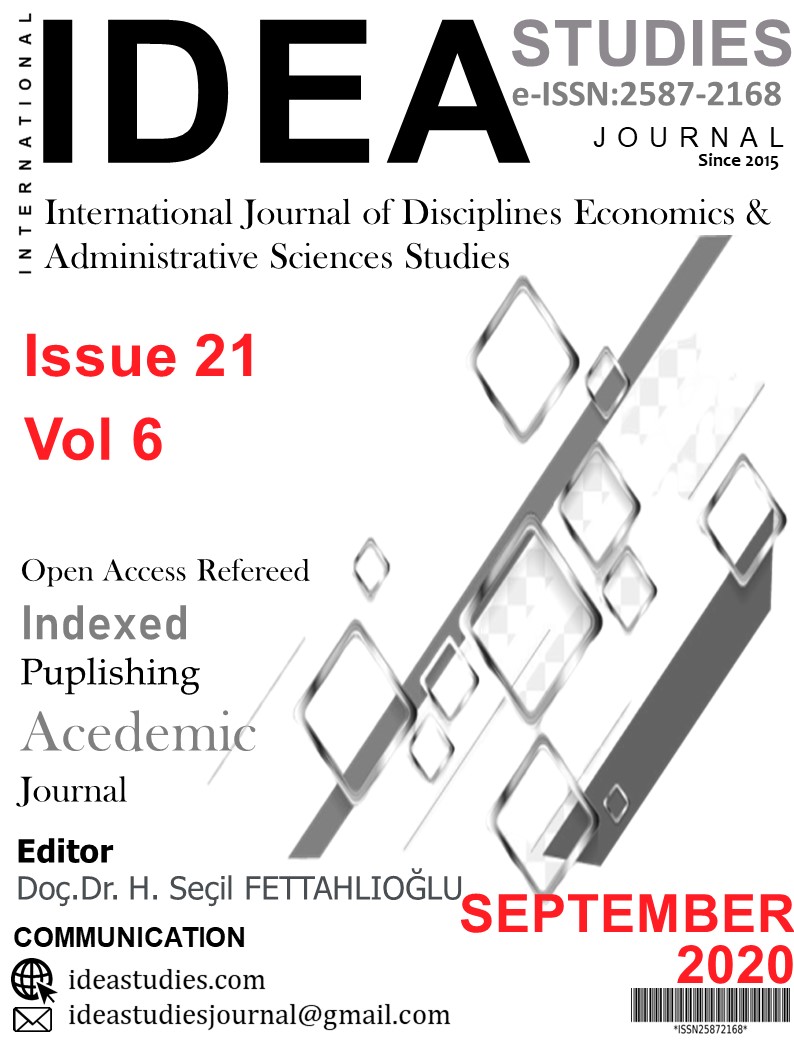Author :
Abstract
Türk hisse senetleri, Aralık 2004 ve Aralık 2015 tarihleri arasında büyüklük ve momentum etkileri yönünden analiz edilmiştir. Küçük hisse senetleri, en yüksek ortalama getiri ve standart sapmaya sahipken, orta büyüklükteki hisse senetlerinin en düşük ortalama getiri ve standart sapmaya sahip olduğu gözlemlenmiştir. Hisse senetleri, büyüklük yönünden 5'e bölünmüş olup her büyüklük için alfanın önemsiz olduğu görülmüştür. İlaveten, onbir sene süresince Türk hisse senetlerinde momentum tersi hareket gözlemlenmiştir.
Keywords
Abstract
We analyze Turkish equity market data released between December 2004 and December 2015 for size and momentum effects. We observe that small stocks have the highest average return and standard deviation, while middle-sized stocks have the lowest average return and standard deviation. After dividing stocks into quintiles based on size, we find that alphas are insignificant in each quintile, except the biggest companies of which alpha is negligible. Additionally, we observe a contrarian effect on Turkish stocks over the eleven years.
Keywords
- Aksu, M. H., & Onder, T. (2000). The size and book-to-market effects and their role as risk proxies
- Aksu, M. H., & Onder, T. (2000). The size and book-to-market effects and their role as risk proxies in the Istanbul stock exchange.
- Alper, D., & Aydoğan, E. (2017). The Profitability of Contrarian Strategy: Borsa Istanbul Case. Muhasebe ve Finansman Dergisi, (74), 201-214.
- Atilgan, Y., Demirtas, K. O., & Erdogan, A. (2015). Macroeconomic factors and equity returns in Borsa İstanbul. Iktisat Isletme ve Finans, 30(349).
- Banz, Rolf W., 1981, ”The Relationship between Return and Market Value of Common Stocks,”Journal of Financial Economics, 9, 3-18.
- Bildik, R., & Gülay, G. (2007). Profitability of contrarian strategies: Evidence from the Istanbul stock exchange. International Review of Finance, 7(1‐2), 61-87.
- Canbaş, S., & Arioğlu, E. (2008). Testing the three factor model of Fama and French: Evidence from Turkey. Journal of the Cukurova University Institute of Social Sciences, 17(3).
- Chan, K. C., Chen, N. F., & Hsieh, D. A. (1985). An exploratory investigation of the firm size effect. Journal of Financial Economics, 14(3), 451-471.
- De Bondt, W. F., & Thaler, R. (1985). Does the stock market overreact?. The Journal of finance, 40(3), 793-805.
- Eraslan, V. (2013). Fama and French three-factor model: Evidence from Istanbul stock exchange. Business and Economics Research Journal, 4(2), 11.
- Fama, E. F., & French, K. R. (1992). The cross‐section of expected stock returns. the Journal of Finance, 47(2), 427-465.
- Fama, E. F., & French, K. R. (1993). Common risk factors in the returns on stocks and bonds. Journal of.
- Griffin, J. M., Ji, X., & Martin, J. S. (2003). Momentum investing and business cycle risk: Evidence from pole to pole. The Journal of Finance, 58(6), 2515-2547.
- Grundy, B. D., & Martin, J. S. M. (2001). Understanding the nature of the risks and the source of the rewards to momentum investing. The Review of Financial Studies, 14(1), 29-78.G
- Guzeldere, H., & Sarioglu, S. E. (2012). Validity of Fama-French three-factor model in assetpricing: An application in Istanbul stock exchange. Business and Economics Research Journal, 3(2), 1-1.
- Jegadeesh, N., & Titman, S. (1993). Returns to buying winners and selling losers: Implications for stock market efficiency. The Journal of finance, 48(1), 65-91.
- Karaomer, Y. (2017). Fama-French five factor model: evidence from Turkey. International Journal of Economics and Financial Issues, 7(6), 130.
- Keim, D. B. (1983). Size-related anomalies and stock return seasonality: Further empirical evidence. Journal of financial economics, 12(1), 13-32.
- Lintner, J. (1975). The valuation of risk assets and the selection of risky investments in stockportfolios and capital budgets. In Stochastic optimization models in finance (pp. 131-155). Academic Press.
- Mossin, J. (1966). Equilibrium in a capital asset market. Econometrica: Journal of the econometric society, 768-783.
- Reinganum, M. R. (1981). Misspecification of capital asset pricing: Empirical anomalies based on earnings' yields and market values. Journal of financial Economics, 9(1), 19-46.
- Rouwenhorst, K. G. (1998). International momentum strategies. The journal of finance, 53(1), 267- 284.
- Rouwenhorst, K. G. (1999). Local return factors and turnover in emerging stock markets. The journal of finance, 54(4), 1439-1464.
- Sharpe, W. F. (1964). Capital asset prices: A theory of market equilibrium under conditions of risk. The journal of finance, 19(3), 425-442.
